There is no cuter sight than an otter floating around on its back with its little paws folded on its belly. They look like aquatic teddy bears from a distance, but if you get up close, you soon realize not everything about the otter is quite so adorable.
Despite that, the demand for pet otters is soaring, and it’s not doing the otter any favors. Asian small-clawed otters are highly sought after both as pets and for the increasingly popular otter cafes.
Even some of those who own pet otters advise others against it, and we’re going to find out why. Not only that, but we’re going to explore the otter’s natural habitat and its origins.
The Classification of the Semi-Aquatic Otter
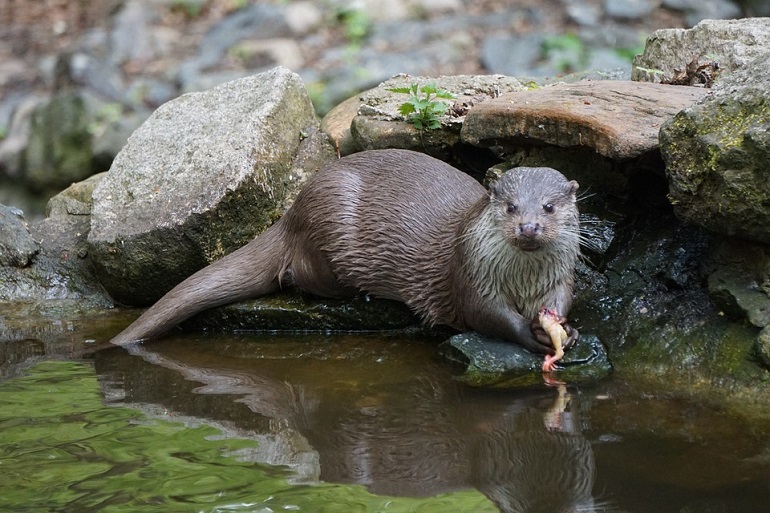
You’d expect otters and beavers to be closely related; after all, they’re both furry creatures that spend large portions of their day in the water. Weirdly enough, however, they don’t even belong to the same family.
In fact, you could say they’re otterly different! While both are mammals, otters are carnivorous and more closely related to the weasel.
Would you believe there are 13 different otter species, which are divided into two distinct groups – river otters and sea otters? The lutra genus contains all the world’s river otters, while sea otters belong to the Enhydra genus.
Exploring the Anatomy and Physiology of the Otter
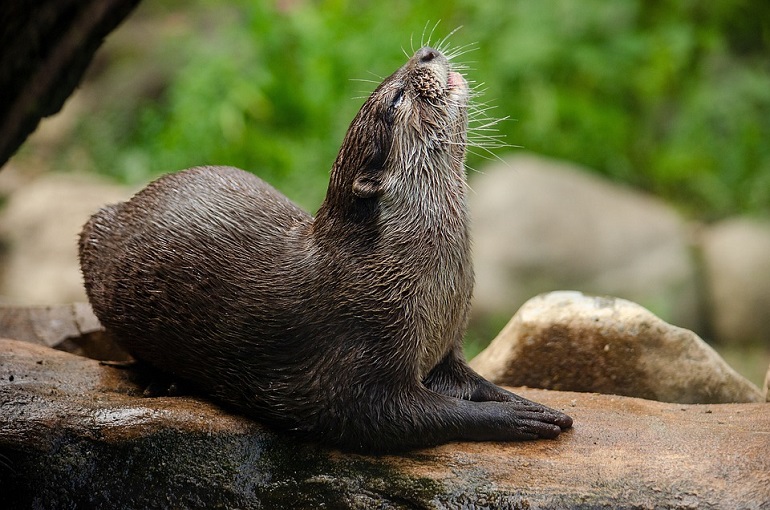
Wild otters all have a few things in common, including their basic physiology and love of water. With their dense fur coats and webbed feet, they are perfectly adapted to an aquatic environment and spend most of their time in the water.
Even with that thick fur, otters have had to make physiological adaptations so they can keep warm. Sea otters live in the cold waters of the North Atlantic and rely on their fast metabolisms to generate enough heat to stay warm.
Another characteristic shared by all otter species is that they are one of the few animals to have inbuilt pockets! Under their forearms, otters have flaps of skin into which they can stash food and useful tools like rocks.
They can’t fit a cell phone in there yet, but who knows where evolution’s headed?
A Look At The Ecology And Behavior Of The Otter
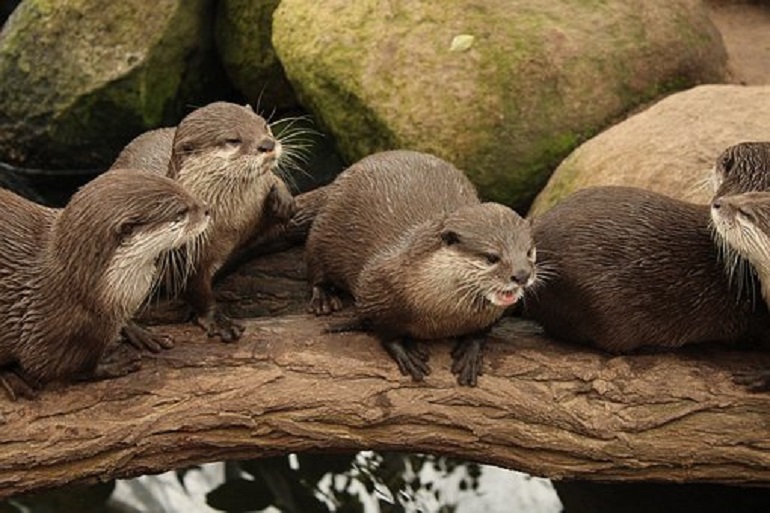
Despite its adorable appearance, the otter can be surprisingly merciless and violent if the situation demands it. Studies have discovered a nasty side to the sea otter, with scientists observing males harassing and sexually interacting with young harbor seals.
Even when reproducing with their own kind, male sea otters are so violent that the trauma can prove fatal for their partners.
River otters aren’t much better and will defend their territories aggressively if provoked. There are even reports of them attacking humans, crocodiles, and alligators!
Of course, there is an otter side to the story (excuse the pun!), and that’s the critical role otters play in their aquatic ecosystems. As apex predators, river otters control the populations of their prey species.
Without sea otters, sea urchins would proliferate, destroying the kelp forests that absorb and sequester so much of the world’s carbon.
Is the Lifespan of the Pet Otter the Same as that of Wild Animals?
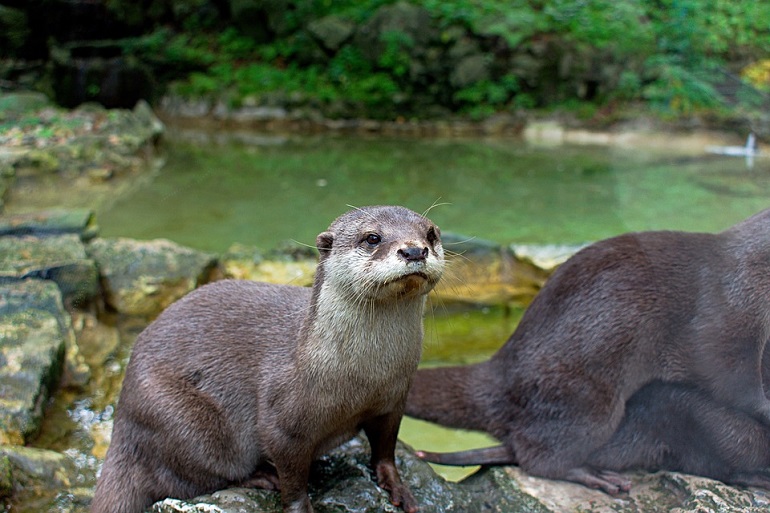
Wild animals face numerous threats, from predators to disease, which is why domesticated animals often survive longer.
This is no different for the otter, and pet otters can survive for up to 20 years, while those in the wild have a life expectancy of between 10 to 15 years.
That’s hardly surprising when you consider that mortality for river otter pups sits at over 50% in their second year and that significant numbers of female sea otters die from the injuries the males inflict during mating.
That doesn’t mean finding yourself a pet otter is the best way of protecting the species, and I’ll explain why a little later on.
The Sex Life of Otters: Reproduction and Offspring
Playing the mating game for a female sea otter is a painful experience that often ends with her having a bloody, swollen nose.
Male sea otters often hold onto their partner’s nose with their teeth to keep themselves in position.
River otters don’t seem quite so aggressive and will even mate on land if they’re feeling particularly brazen.
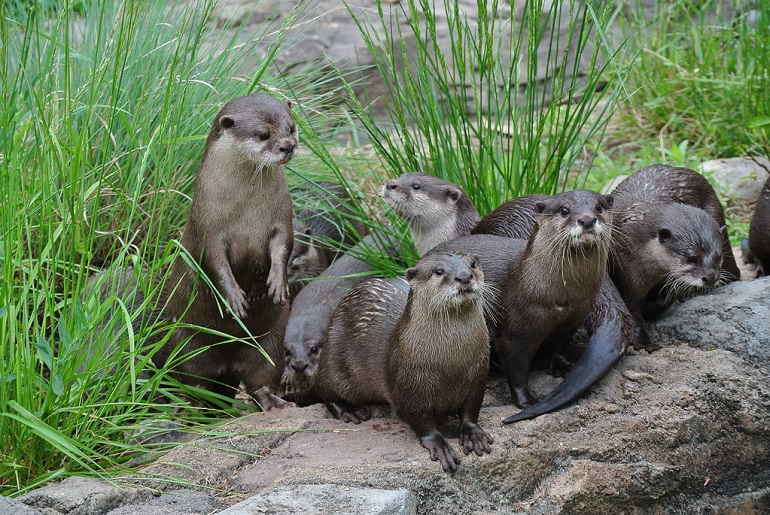
After copulating, the male and female otters part company, leaving the female to raise the cubs alone.
Clawless and river otters are only pregnant for a couple of months, after which they give birth to a small litter of between one and six cubs.
This gestation period is the same for marine and smooth-coated otters as well, but sea otters practice delayed implantation which can postpone the pregnancy for up to 10 months.
When they do finally give birth, they only have one or two pups, of which there will only be one sole survivor (just like on the reality TV show!)
Determining The Worldwide Population Of Otters
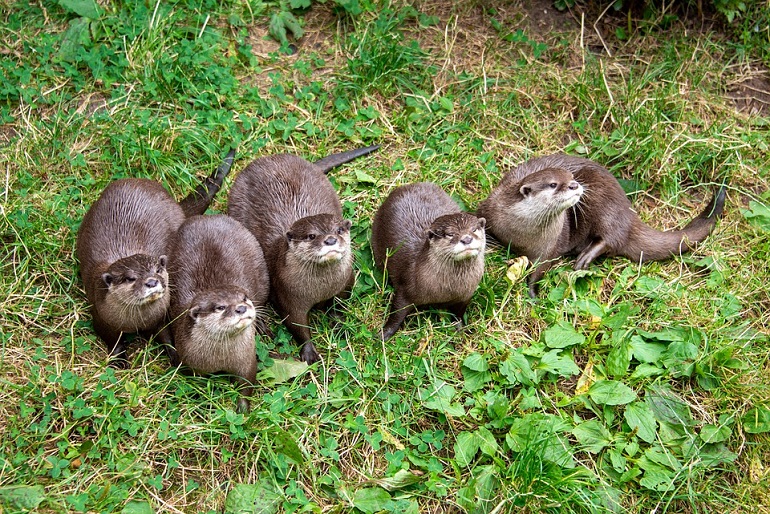
You’d have to do a lot of research to establish just how many otters there are in the world. Otters live in a wide range of semi-aquatic habitats, from the icy world of the Alaskan sea otter to the African clawless otter that languishes in the heat of sub-Saharan Africa. Trying to count them all is simply impossible!
What we do know is that some populations of sea otters are gradually recovering after being virtually decimated during the 18th and 19th centuries, when they were heavily hunted for their rich fur pelts.
Sadly, the latest exotic pet trend has seen other otter species diminishing. The Asian small-clawed otter was once abundant throughout most of Southeast Asia, but their population is declining rapidly. Other otters are near threatened, while others, like the hairy-nosed otter, are facing possible extinction.
Why Do Otters Have the Thickest Fur of Any Mammal?
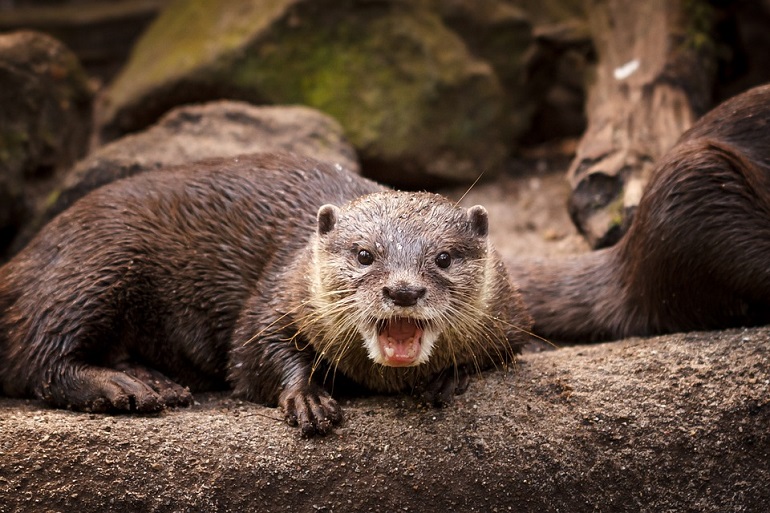
When I see a cute pet otter video, it’s the fur that really gets me. It’s so thick and glossy I just want to bury my face in it! I’m sure I’m not the only one that feels that way; after all, otters have the thickest, densest fur of any mammal in the world.
Yes, it’s thicker than panda fur and fuzzier than a koala! Why? Because otters need to stay warm, even when they can’t stay dry, and they don’t have the layer of blubber that seals and other aquatic mammals use to insulate themselves.
If you examine an otter’s fur under a microscope, you’ll find millions of hairs in every square inch of skin. These hairs are dense and spiky, meaning they can trap air between themselves and the otter’s skin, creating an insulating layer.
Unfortunately, being wrapped in a blanket of air isn’t very useful when you’re trying to swim underwater, so otters will sometimes fill their underarm pockets with stones to counter the air’s buoyancy. Intriguing, hey?
An Otterly Different Approach To Dieting
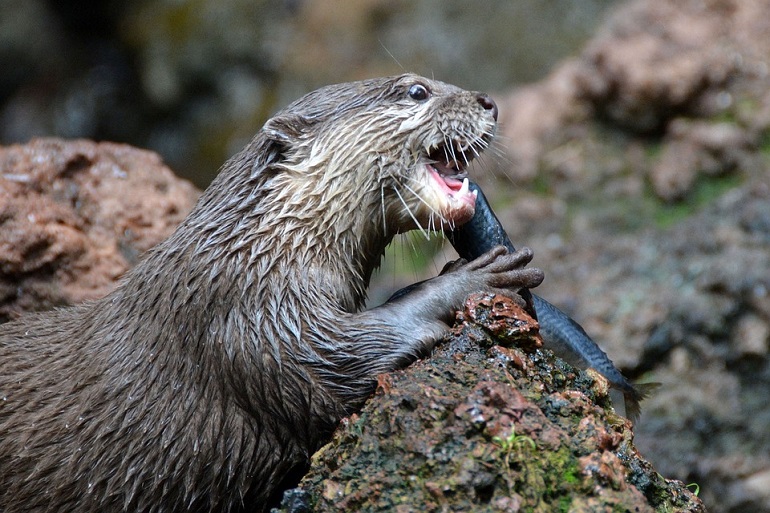
Here in South Africa, we can always tell where a clawless otter had dinner from the mess of shells they leave behind. That’s because this otter species feeds mainly on crabs. Other otter species are less selective, eating everything from frogs to insects, with the occasional crayfish thrown in for good measure.
Giant otters eat mainly fish, while other species, including the endangered southern otter, experiment with birds, preying on gulls, cormorants, and western grebes. Other otter species also take rodents and even rabbits if the opportunity arises.
There are even reports of otters killing and eating small alligators, beavers, snapping turtles, and even snakes.
When you’re aware of how diverse the otter’s diet is, you start to realize how difficult it must be to keep an otter as a pet. There’s nothing cute about watching your pet otter devour your daughter’s gerbil or set to work on your favorite snake!
Do Otters Make Good Pets?
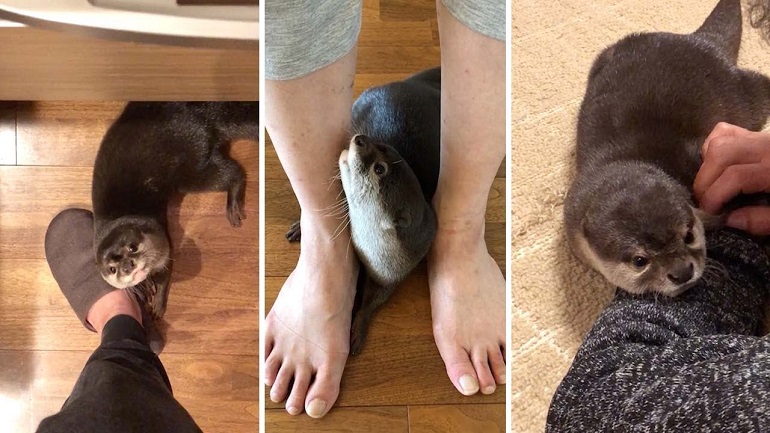
In theory, otters make wonderful pets. They’re entertaining, furry, intelligent, and ever so cute, but that’s where the theory ends, and reality comes into play.
Otters are wild animals, and aggressive ones at that. They’re also social animals that may experience stress and anxiety when forced to live a solitary life.
Otters are almost impossible to house-train and need a highly specialized diet, as we just discovered. They are also prone to infections and need regular injections to keep diseases like distemper at bay.
The Problems and Challenges of Keeping a Pet Otter
Otters naturally live in family groups, so need a lot of entertainment and socializing if they’re to make good pets. Keeping otters means creating a suitable space for them and providing them with enough enrichment that can remain as active as they are in the wild.
Other problems pet otter owners experience include:
Otters are Noisy
Otters make all kinds of noises to communicate, including high-pitched squeaks, growls, and chirps. Sadly, they also scream and whistle at the top of their voices.
Studies show that North American Otters can produce vocalizations well over 70 decibels which would be considered disturbing in an urban environment (it’s about as loud as your vacuum cleaner).
Otters Have a Distinctive Smell
To say that otters have a distinctive smell is putting it mildly. To be more precise, they stink! Otters have scent glands all over their bodies and like to rub themselves on things to scent mark their surroundings. Although some scientists describe this as “smelling like violets,” most pet otter owners say it’s rather more fishy than flowery!
Otters also have strong-smelling feces, which in their natural environment, they use to communicate with one another. In captivity, it’s simply smelly and rather unpleasant.
Otters Can Be Aggressive
An otter experiencing stress or anxiety can become extremely aggressive, attacking its owners and biting other animals. These bites are deep and painful and require immediate treatment to reduce the risk of bacterial infection.
Otters are Messy Housemates
I share my home environment with four dogs, so I’m used to some mess, but it’s nothing compared to an otter! At least my dogs don’t poop in the house or smear their feces on my furniture.
I’m not trying to make otters out to be the bad guys – they’re not; they’re just not suited to a domesticated environment.
Factors to Consider about Keeping Otters as Pets
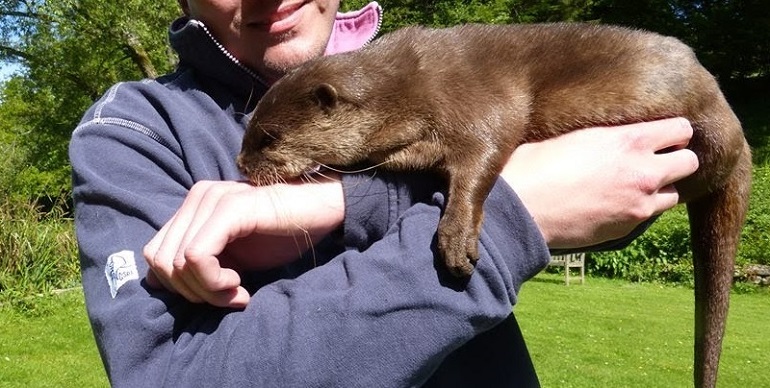
It’s not only the otter’s natural behavior that makes it unsuitable as a pet. There are lots of different factors to be considered, including:
Small-Clawed Otters are Increasingly Popular as Pets
The Asian small-clawed otter appears to be gaining traction among those interested in owning exotic pets, but it’s not doing the wild population any good.
Those supplying these exotic animals often kill the adults so they can capture the cubs and sell them into captivity. Many of these animals suffer from stress, dehydration, and disease and die long before they reach their destination.
Otters May not be Legal Pets
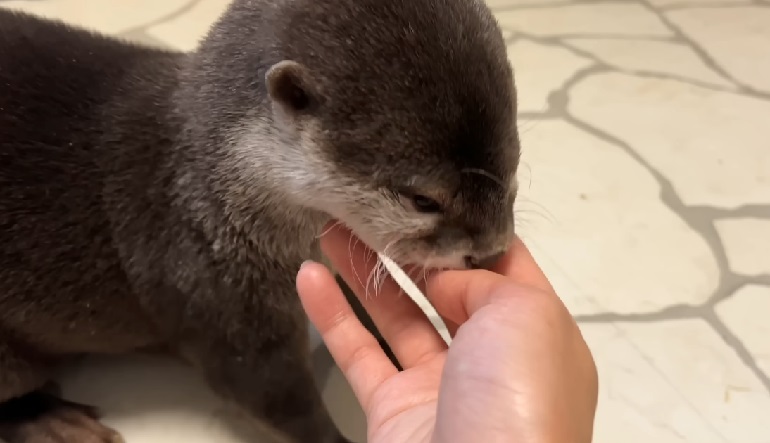
Owning a pet otter is illegal in many countries, including the UK, Japan, and most of the US. We’ll look at the state-to-state legality in more detail in a later section, but for now, it’s enough to recognize that owning a pet otter could earn you a fine of up to £5,000 – the equivalent of just over $6,000.
Otters Need Lots of Space
River otters like the Asian small-clawed otter have huge home ranges in the wild, utilizing up to 20km of riverine habitat. This is impossible to replicate in a home environment, making it difficult for most to provide adequate housing. An enclosure suitable for a medium-sized dog is nowhere near big enough for an otter.
Otters are Semi Aquatic
Not only do otters need large enclosures, but they must also have access to plenty of fresh water. An otter pool needs to be deep enough that the animal can dive and swim as it would in the wild. A children’s paddling pool isn’t going to cut the mustard, even if you’ve only got a small-clawed otter the size of a toy terrier!
Keeping an Otter Can Be Expensive
To buy yourself a pet otter, you need about $3,000 to $5,000, and that’s only the start of your expenses.
Otters eat around 20% of their body weight daily, and they won’t be happy just eating the same run-of-the-mill cat food you buy for your kitten. No, otters need a specialized diet comprised of live crayfish and low-pH cat food.
And that’s just for starters. They also need regular veterinary check-ups and injections to keep them healthy and free of disease.
You’ll also need to buy toys, replace them when they get damaged, and provide heating in their enclosure if the ambient temperature drops below 75℉.
Are Otters Legal as Pets?
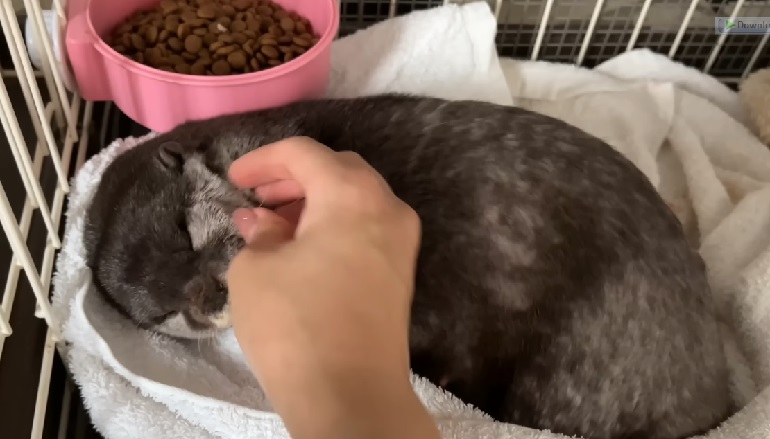
Sea otters are protected under the Marine Mammal Protection Act, making owning one illegal throughout the country. The same rules don’t apply to river otters, so it may be legal to own an Asian small-clawed otter in some states.
States Where Pet Otters Are Possibly Legal
The following states may allow you to own a pet otter, providing you have the relevant license or permit:
- Florida
- Indiana
- Michigan
- Minnesota
- Mississippi
- Missouri
- Nebraska
- Nevada
- New York
- North Carolina
- North Dakota
- Ohio
- Oklahoma
- South Dakota
- Tennessee
You should contact a state wildlife official to confirm before shelling out thousands of dollars on a pet otter.
Unclear Laws and Regulations Regarding Otters as Pets
Every state has some regulations controlling the ownership of exotic animals, but these are often unclear, making them open to interpretation.
Most are designed to stop people from keeping potentially dangerous animals but don’t necessarily specify when it comes to smaller creatures like otters.
This is why you should always contact the relevant authorities before buying a legal exotic pet.
Quick Facts about Small-clawed Otters
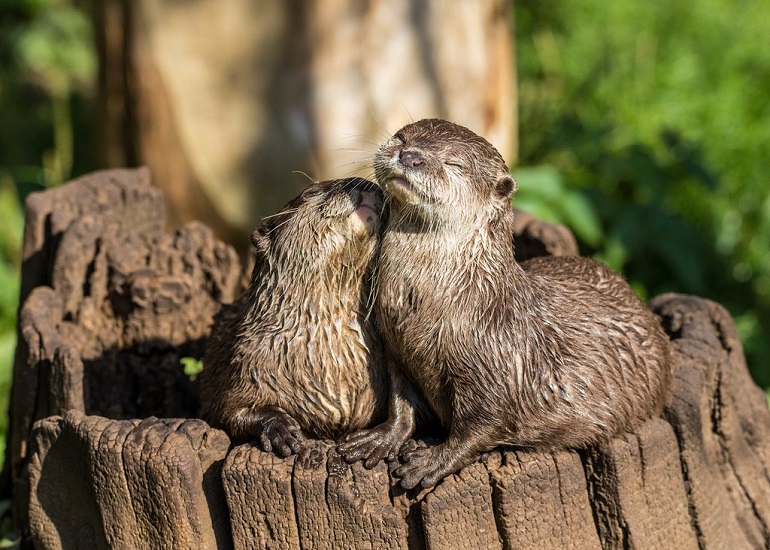
- It’s the smallest of the world’s otter species, measuring just two feet in length (including its tail).
- Asian small-clawed otters have such short claws that they’re barely visible beyond their digital pads
- Small-clawed otters are extremely vocal and have over 12 different noises that use to communicate. These include squeaks, growls, and shrieks.
- The Asian small-clawed otter uses its forepaws to capture food, rather than its mouth, digging in the sand for mussels and other crustaceans.
How To Care for a Pet Otter
We already mentioned that pet otters need a large enclosure, access to water, plenty of mental stimulation, and a specialized diet.
Caging a Pet Otter
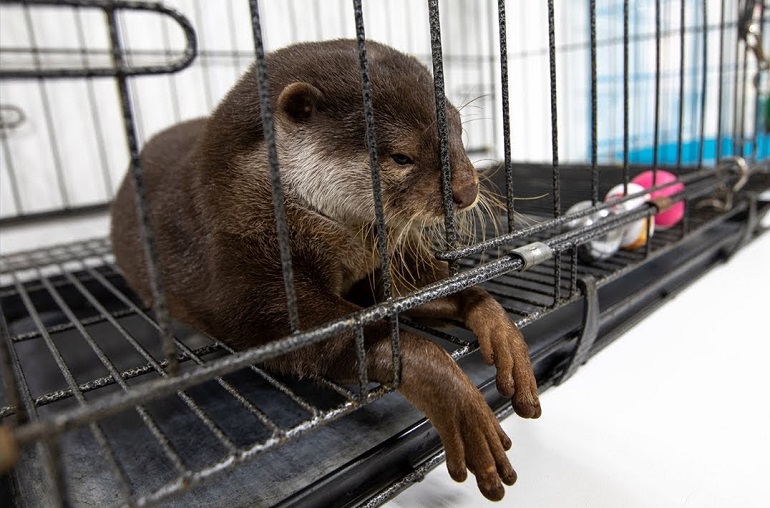
A pet otter needs a large enclosure that includes a pool big enough for it to dive and swim. As otters are talented climbers and excellent diggers, it needs to be almost as secure as Fort Knox.
To keep your pet otter safe, you need to give it enough caged space so it can exercise and forage while preventing it from escaping.
A suitable enclosure for an otter is around 60 square meters, with fences that extend a couple of feet below ground and a secure roof on top to stop them from climbing out.
Entertainment
Otters are intelligent, active creatures that need mental as well as physical stimulation. Treat dispensing like those you buy for dogs will help keep your otter’s mind engaged and encourage him to replicate the foraging behaviors he’d exhibit in the wild.
Pet otters also enjoy playing fetch and will happily retrieve frisbees and pretty much anything else that floats.
Are There Any Safety Concerns Regarding Pet Otters?
Like most wild animals, otters can carry infectious diseases that they could transmit to your other animals or, worse still, to you and your family.
Otters are most likely to get infected with things like Salmonella and Streptococcus phocae. They could also pick up rabies or canine distemper if you also own dogs.
Conservation Status of the Different Species of Otters
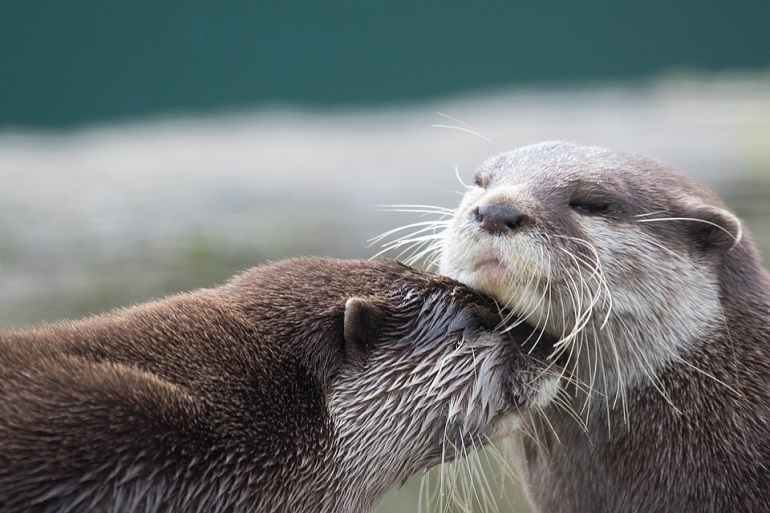
Many otters are already endangered species, and their populations are decreasing. The sea otter, giant otter, smooth-coated otter, and Eurasian otter are all endangered or near threatened, according to the IUCN, and more extensive conservation efforts will be required to reverse the current trend.
Some types of sea otters have been protected by the Endangered Species Act for nearly 40 years, and their populations are gradually recovering.
The Asian small-clawed and smooth-coated otters were placed under the highest level of protection by the Convention on International Trade in Endangered Species (CITES) in 2019 to combat illegal poaching for the exotic pet trade.
FAQ’s
How Much Does a Pet Otter Cost?
In the US, you can expect to pay between $3,000 and $5,000 for a pet otter, not including transportation costs.
What Legal Pets are Like Otters?
It is possible to find a legal alternative to keeping an otter in those places where doing so could land you on the wrong side of the law. Otters are similar to weasels and ferrets, which are legal to own in most states, while monkeys can be just as entertaining (and as smelly)!
Do Asian Otters Make Good Pets?
Otters don’t adapt well to a domesticated life, nor do they enjoy it. They can be noisy, destructive, and potentially aggressive, none of which are characteristics I look for in a pet.
Where Can I Buy a Pet Otter?
If, after reading this entire article, you’re still convinced a pet otter will make your life complete, you’ll have to look long and hard to find one.
You may be able to track down a broker or breeder but will have to join a long waiting list. For a while, pet otters occasionally appeared on sites, but you need to be cautious because of their vulnerable status in the wild.
Conclusion
I’ve seen otters in the wild a couple of times, and nothing has brought me so much joy. They are inquisitive, playful creatures that slide through the water like fish and cuddle their offspring like children hug their favorite teddy bears.
I can see the appeal of keeping one as a pet, but would never recommend it for the animal’s sake. Otters are lively, social animals that are mostly active at dawn and dusk, when humans tend to be sleeping. That means they don’t slot into your daily routine very easily.
Otters need lots of space and stimulation, which makes them expensive and high-maintenance pets. You’d be much better off adopting an energetic dog from your local shelter and leaving the otters where they belong – in the wild!


